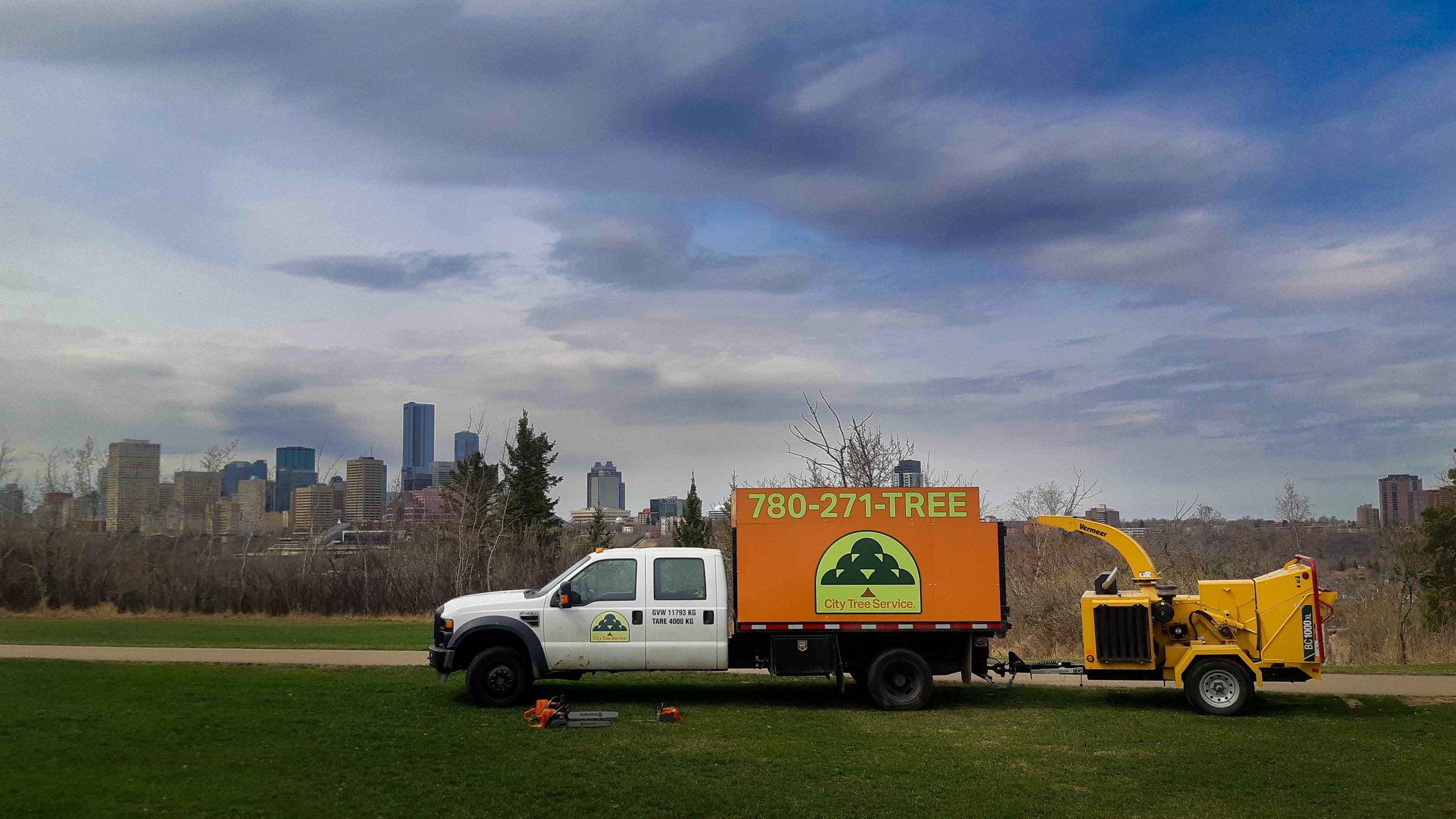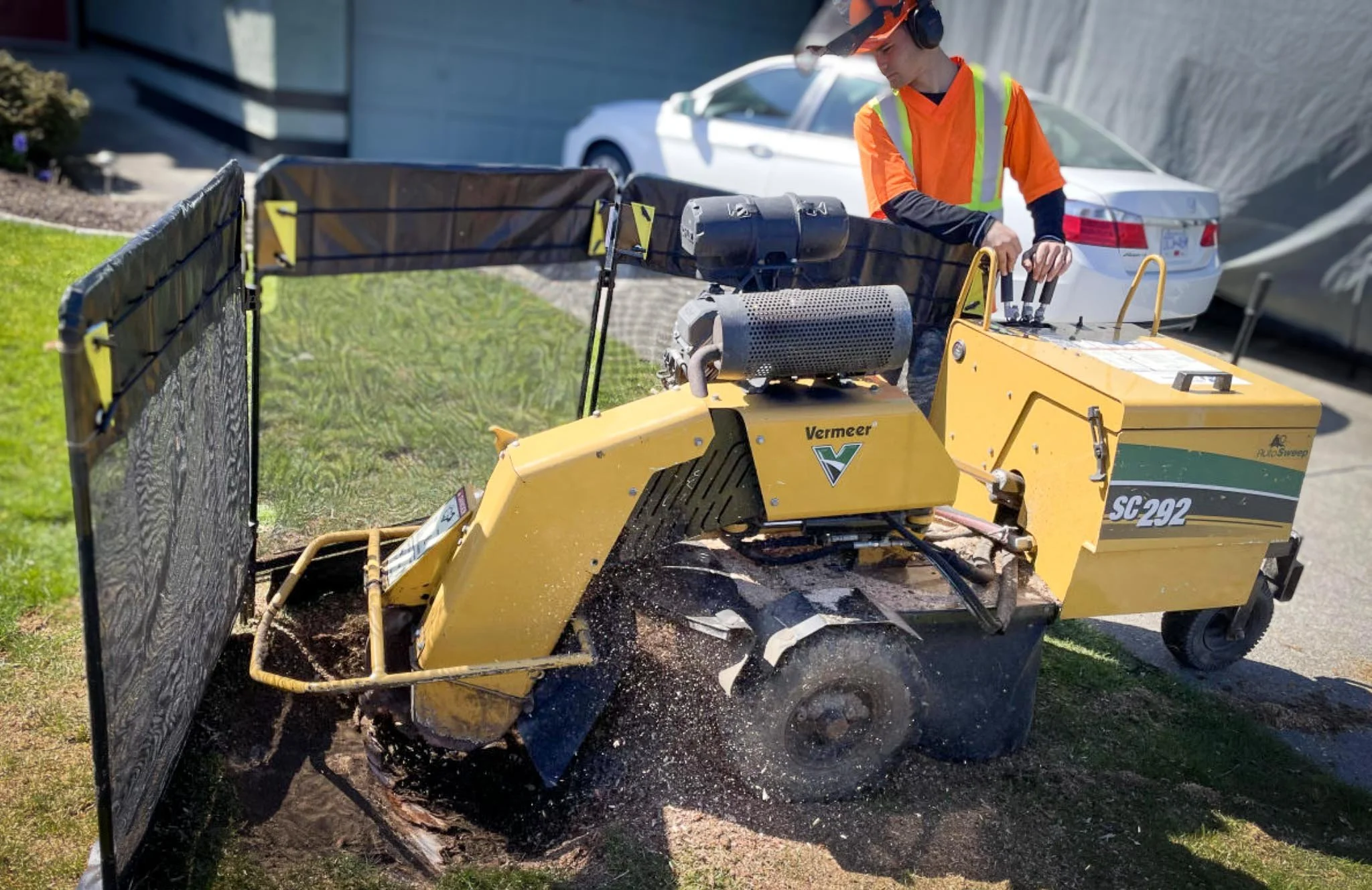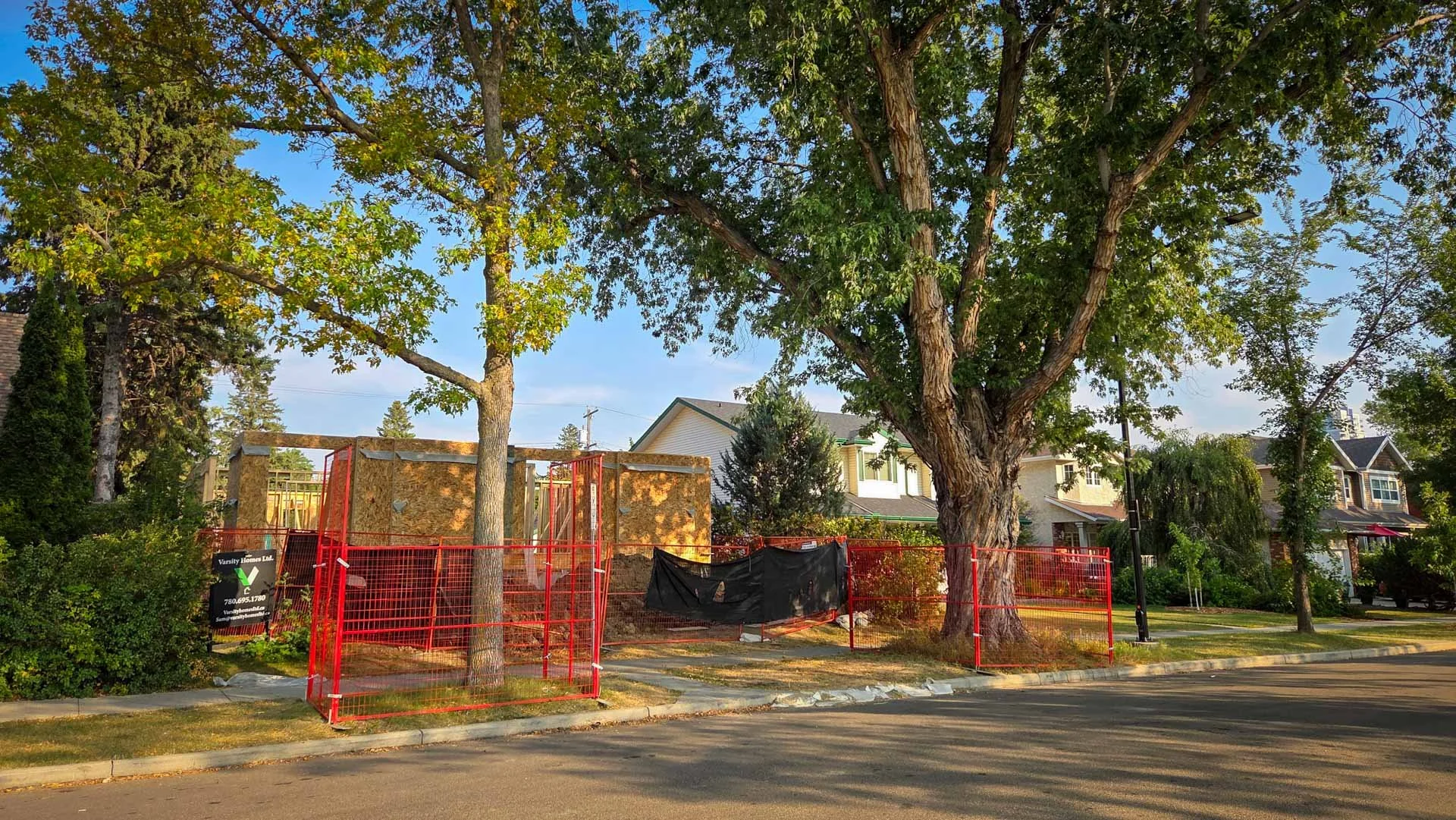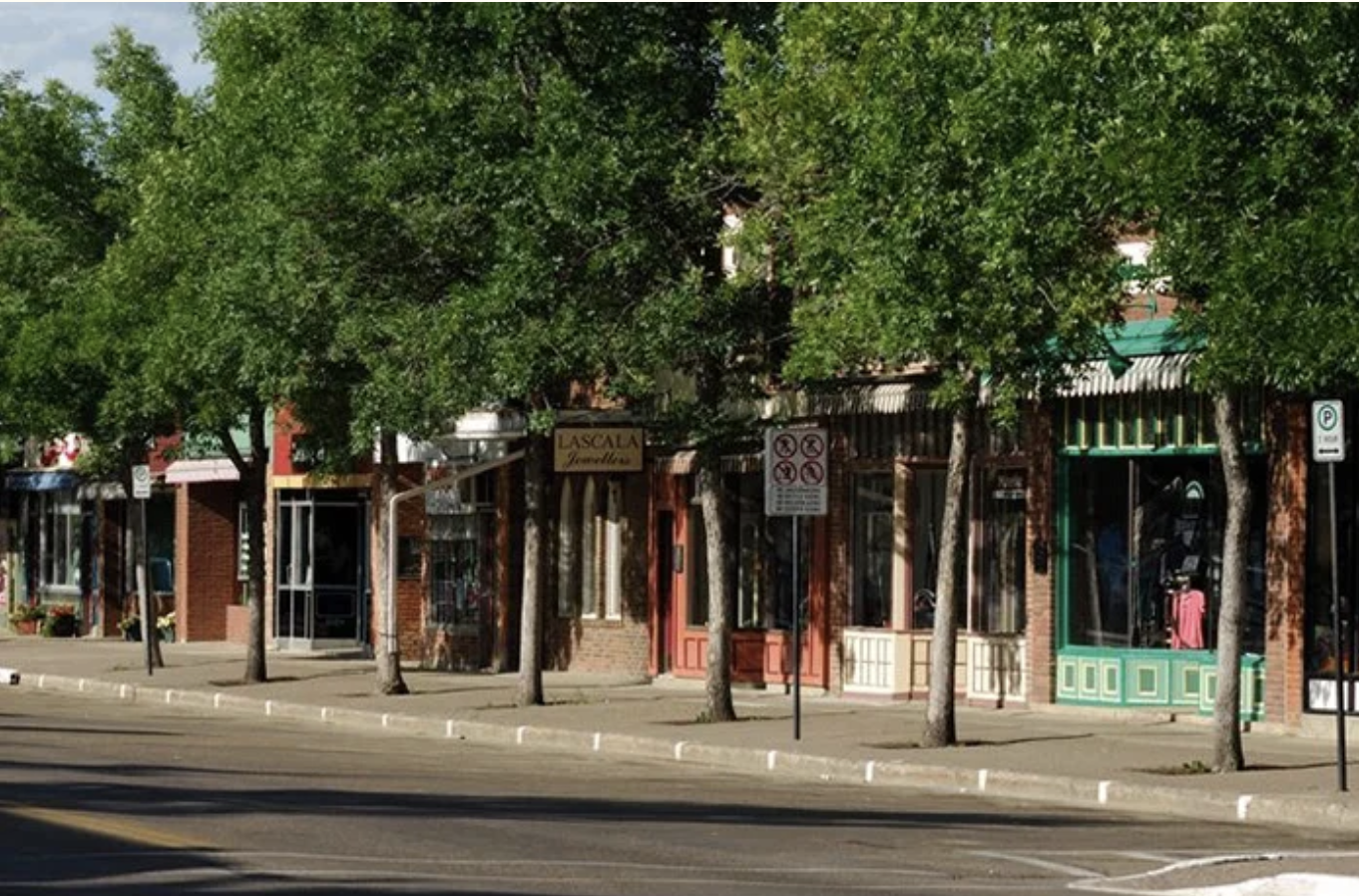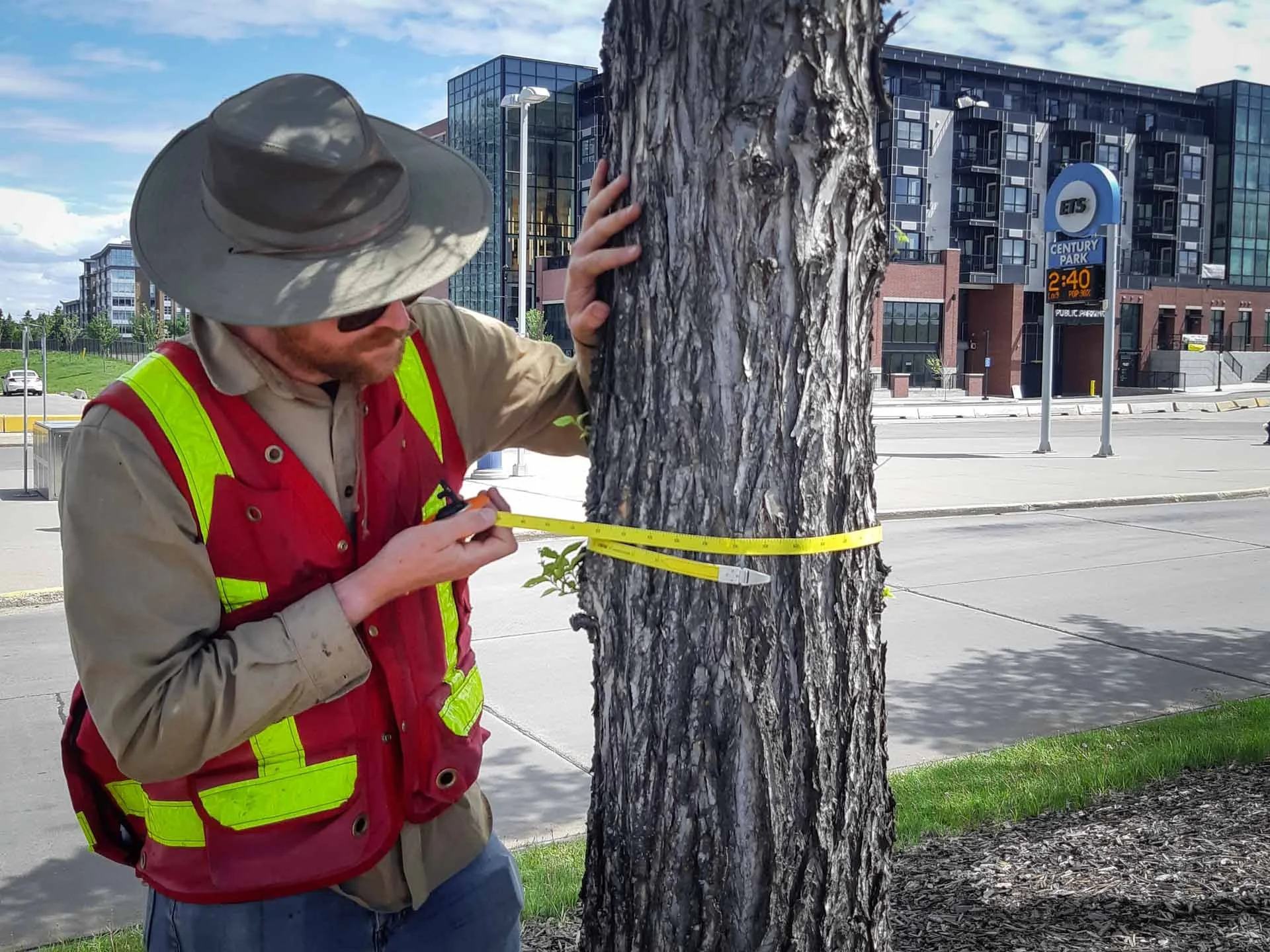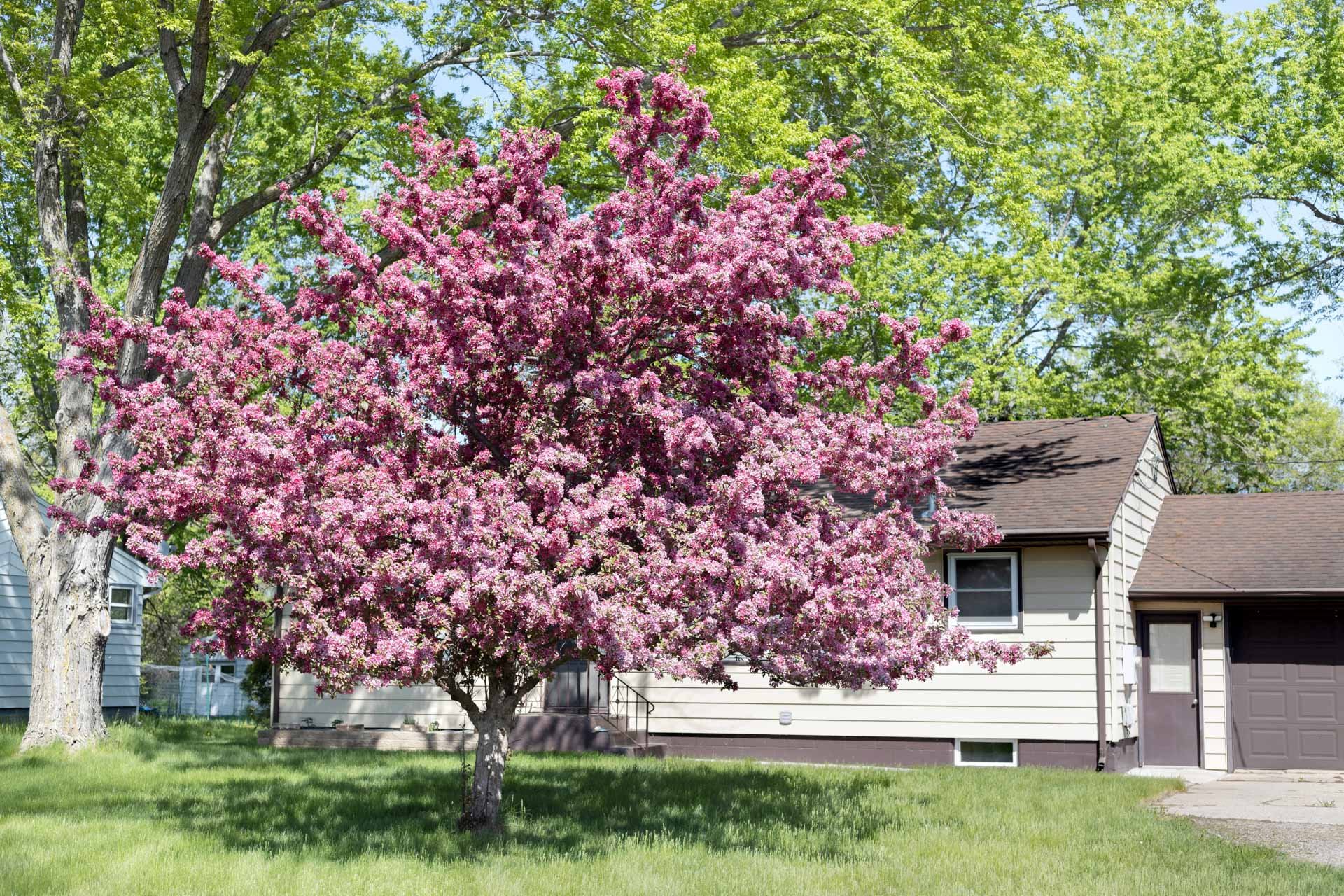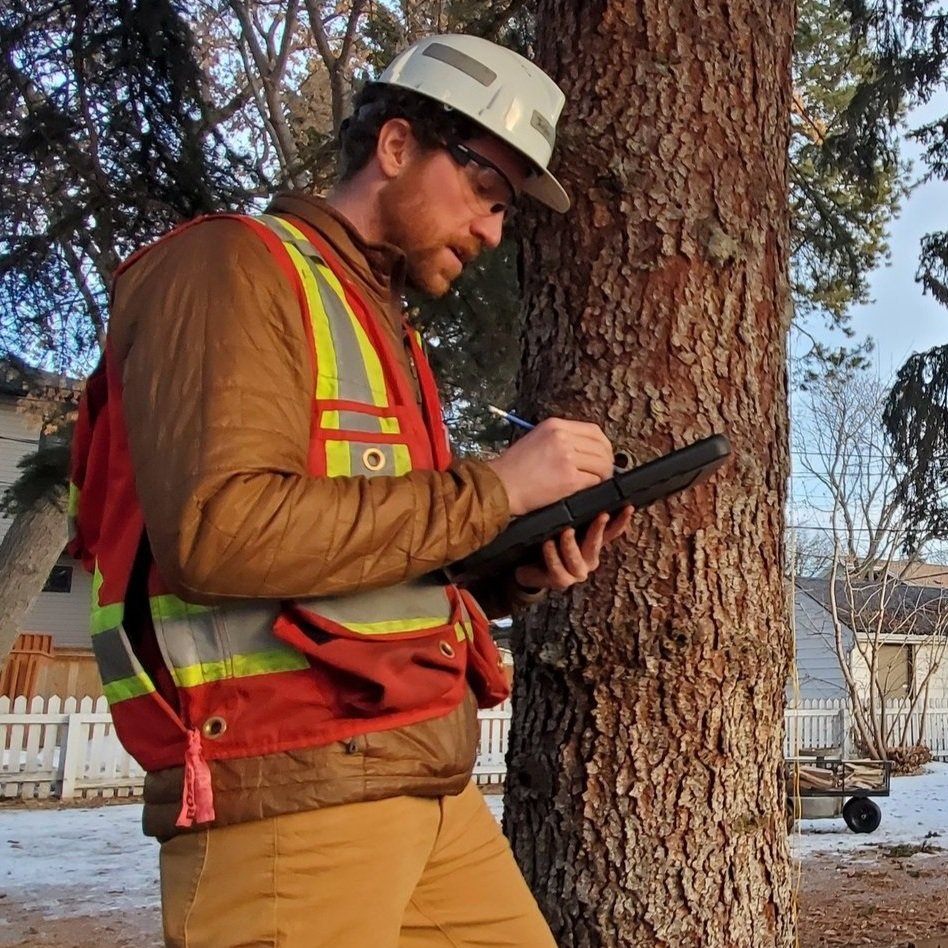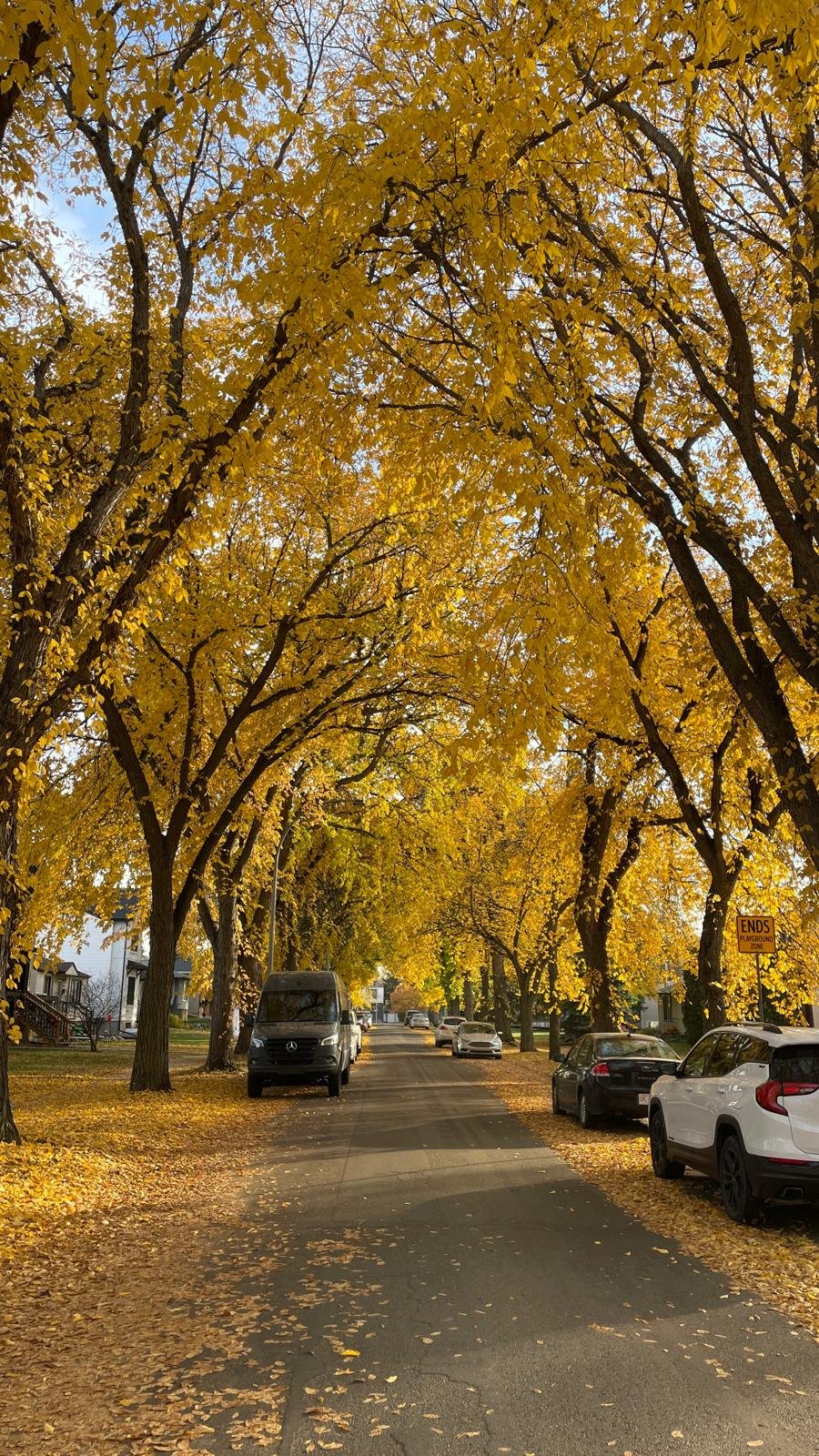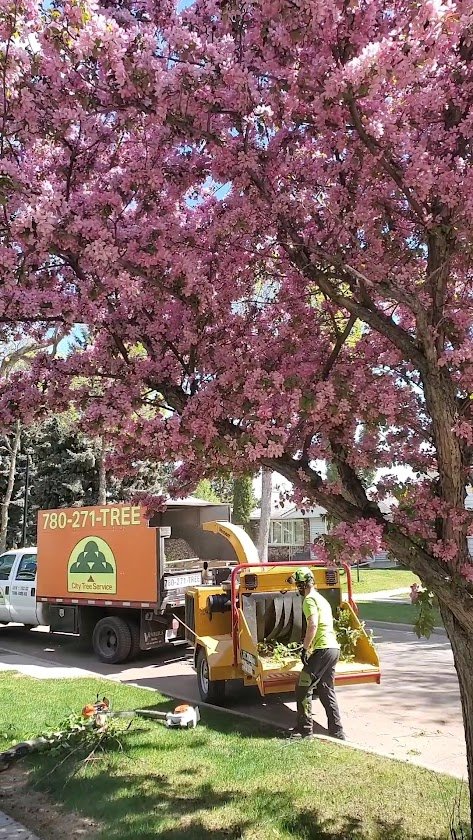Debunking 10 Common Tree Care Myths in Alberta
Table of Contents
Common Tree Myths Explained
When it comes to tree care, misinformation can do more harm than good. Let’s debunk 10 common myths to ensure your Alberta trees remain healthy, vibrant, and strong.
Myth #1: Tree Roots Will Crack My Foundation
Reality: Tree roots grow where they find water. Just like the roots of your houseplants wrap in circles instead of punching through the walls of their pot, tree roots will typically grow around a house’s foundation, not through it. However, if cracks already exist and water is present, roots may grow into the cracks.
Better Practice: Roots typically don’t need to be cut to safely grow near your house. If cutting is required for excavation or development, always consult an arborist first. Always consult a foundation expert for structural issues and check with an arborist before cutting any roots.
Myth #2: Spruce Mulch Acidifies Soil
Reality: Although spruce can tolerate acidic soils, they don’t cause the soil to become acidic. Most soils have natural pH buffers that keep levels stable. If grass is dying beneath a spruce tree, this likely has more to do with shading and rainfall interception than soil pH.
Better Practice: Spruce mulch is just as effective and beneficial as mulch from other species.
Myth #3: Piling Mulch Against the Trunk Is Beneficial
Reality: While mulching is great for tree and soil health, mulch should never touch the trunk. Anything that was above-ground when the tree first grew needs to remain exposed to air. Sometimes trees are planted too deeply—the important part is that the flare at the base of the trunk, called the root collar, is above the soil/mulch.
Better Practice: Keep mulch a minimum of 12 cm (approx. 5 inches) away from the trunk to prevent decay and canopy decline.
Myth #4: Bumps on Tree Leaves Mean It’s Sick
Reality: Trees support a wide range of organisms. Many leaf bumps or spots aren’t harmful and don’t impact the tree’s function.
Better Practice: Don’t panic—if you’re unsure, feel free to send us a photo. We’re happy to help identify the issue.
Myth #5: Topping a Tree Controls Its Height
Reality: Topping severely damages trees by creating large wounds susceptible to pests and diseases. It weakens tree structure and promotes rapid, weak regrowth. Trees will always try to grow upwards to reach the sun, so topping doesn’t stop height growth—it just forces unhealthy regrowth.
Better Practice: Opt for proper pruning techniques like crown reduction, performed by a certified arborist.
Myth #6: You Should Paint Over Tree Wounds
Reality: Tree wound paints or sealants rarely benefit trees and can even trap moisture, increasing decay. As long as the cut was clean, if a branch broke off, an arborist can clean the wound to promote healing.
Better Practice: Allow wounds to heal naturally. Trees typically form protective calluses without intervention.
Myth #7: All Tree Roots Grow Deep Underground
Reality: Most tree roots spread horizontally in the top 6–18 inches of soil to absorb moisture and nutrients efficiently.
Better Practice: Protect root zones from compaction and damage to keep your trees healthy.
Myth #8: Spring is the Only Time to Prune Trees
Reality: While spring can be suitable, pruning times vary by species. If you’re trying to grow apples, removing growth in spring will reduce your harvest (though it may improve quality). Many trees, including elms, have specific windows of pruning that must be respected. Elms, for example, must be pruned between October 1 and March 31 due to city bylaw—this helps prevent Dutch Elm Disease, since pruning wounds release pheromones that attract elm bark beetles. Some trees and shrubs, like cedar, should also not be pruned too close to fall or winter, as they are susceptible to frost damage.
Better Practice: Consult an arborist to determine the best pruning schedule based on your tree species and local conditions.
Myth #9: Removing a Tree is Better than Keeping it
Reality: Serious consideration should be given before removing any trees—you can’t plant a mature tree, so if you already have one you should think carefully before cutting it down. We often hear that a homeowner had to purchase an air conditioning unit after their tree was removed. Preservation and proper care usually outweigh removal unless the tree poses a hazard or is severely diseased.
Better Practice: Have trees assessed by a certified arborist who prioritizes maintaining our urban forest over removing it.
Myth #10: Newly Planted Trees Don’t Need Much Water
Reality: Newly planted trees require consistent watering to establish strong root systems, typically needing deep watering weekly for their first few growing seasons. While mature trees may require less frequent watering, doing so during hot/dry periods is still beneficial to their long-term health.
Better Practice: Maintain a regular watering schedule, especially during dry periods, for optimal growth. Always check the soil’s moisture 1–2 inches below ground before starting to ensure you’re not over-watering.
Empowering Proper Tree Care Practices
Understanding tree care myths helps you make informed decisions for the health of your trees. City Tree Service prioritizes proper tree care, emphasizing preservation and long-term tree health in Alberta.





